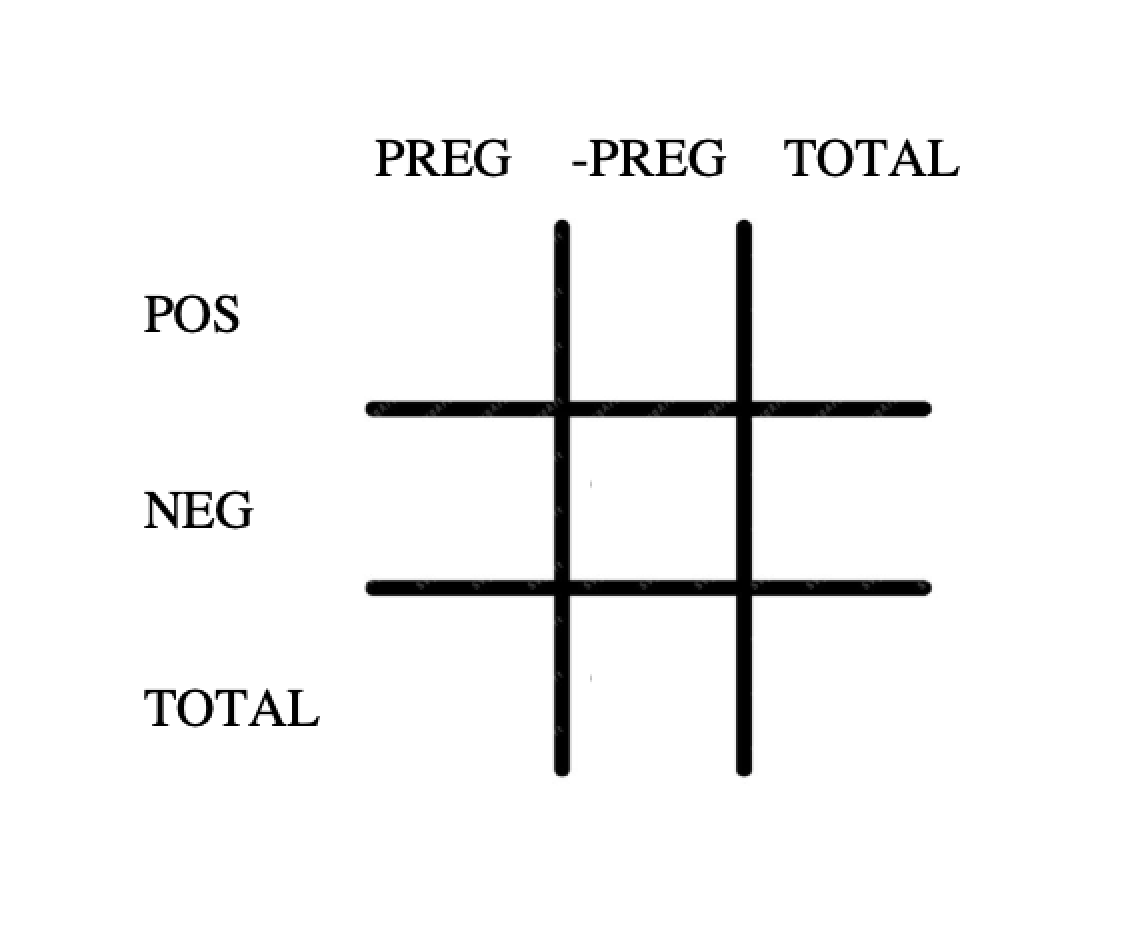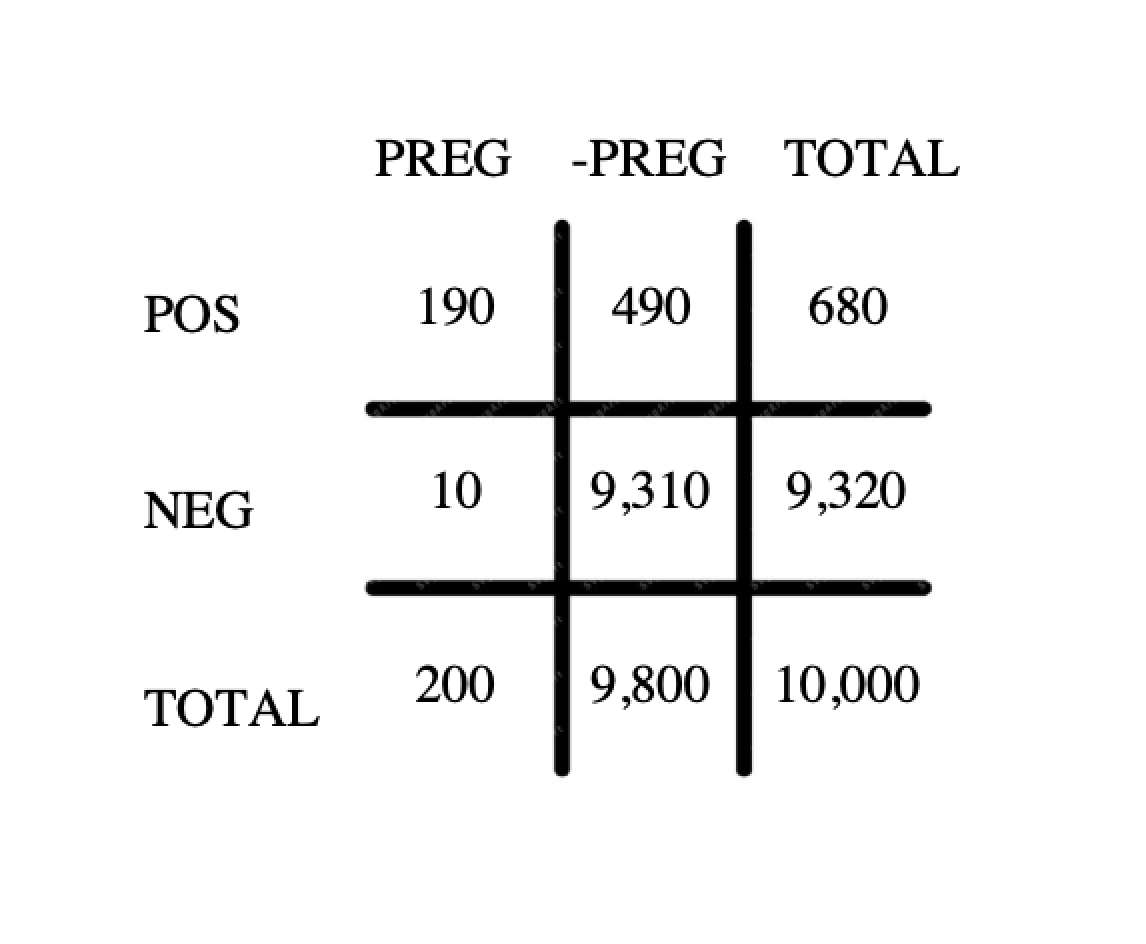For the sake of clarity, I've amended the last sentence of the prompt and the wording for Quantity A:
Carcass wrote:
A certain pregnancy test comes back positive for 95 percent of pregnant women who take it. However, it also comes back positive for 5 percent of non-pregnant women who take it. Two percent of the female population of city A is pregnant.
Yesterday, every woman who resides in city A took the test, and Marisa, a female resident of city A, got a positive result.
Quantity A |
Quantity B |
The probability that Marisa's test indicated an actual pregnancy |
75 % |
This is an EITHER-OR problem.
Every female resident is EITHER pregnant OR not.
The test result for every female resident is EITHER positive OR negative.
For an either-or problem, use a MATRIX to organize the data, as shown below:
Attachment:
 Screen Shot 2022-02-14 at 7.00.32 AM.png [ 61.52 KiB | Viewed 5356 times ]
Screen Shot 2022-02-14 at 7.00.32 AM.png [ 61.52 KiB | Viewed 5356 times ]
Two percent of the female population of city A is pregnant.Let the total number of women = 10,000.
Since 2% of these 10,000 women are pregnant, the following matrix is yielded:
Attachment:
 Screen Shot 2022-02-14 at 7.04.01 AM.png [ 65.4 KiB | Viewed 5323 times ]
Screen Shot 2022-02-14 at 7.04.01 AM.png [ 65.4 KiB | Viewed 5323 times ]
A certain pregnancy test comes back positive for 95 percent of pregnant women who take it.
However, it also comes back positive for 5 percent of non-pregnant women who take it. In the preceding matrix:
A negative result is yielded for 5% of the 200 pregnant women = 10 women
A positive result is yielded for 5% of the 9,800 non-pregnant women = 490 women
The following matrix is yielded:
Attachment:
 Screen Shot 2022-02-14 at 7.11.20 AM.png [ 72.83 KiB | Viewed 5345 times ]
Screen Shot 2022-02-14 at 7.11.20 AM.png [ 72.83 KiB | Viewed 5345 times ]
In the resulting matrix, 190 of the 680 positive results are yielded by pregnant women.
Thus:
The probability that Marissa's positive result indicates an actual pregnancy = 190/680 = much less than 75%.
Quantity B is larger.








 52% (02:15) correct
52% (02:15) correct





